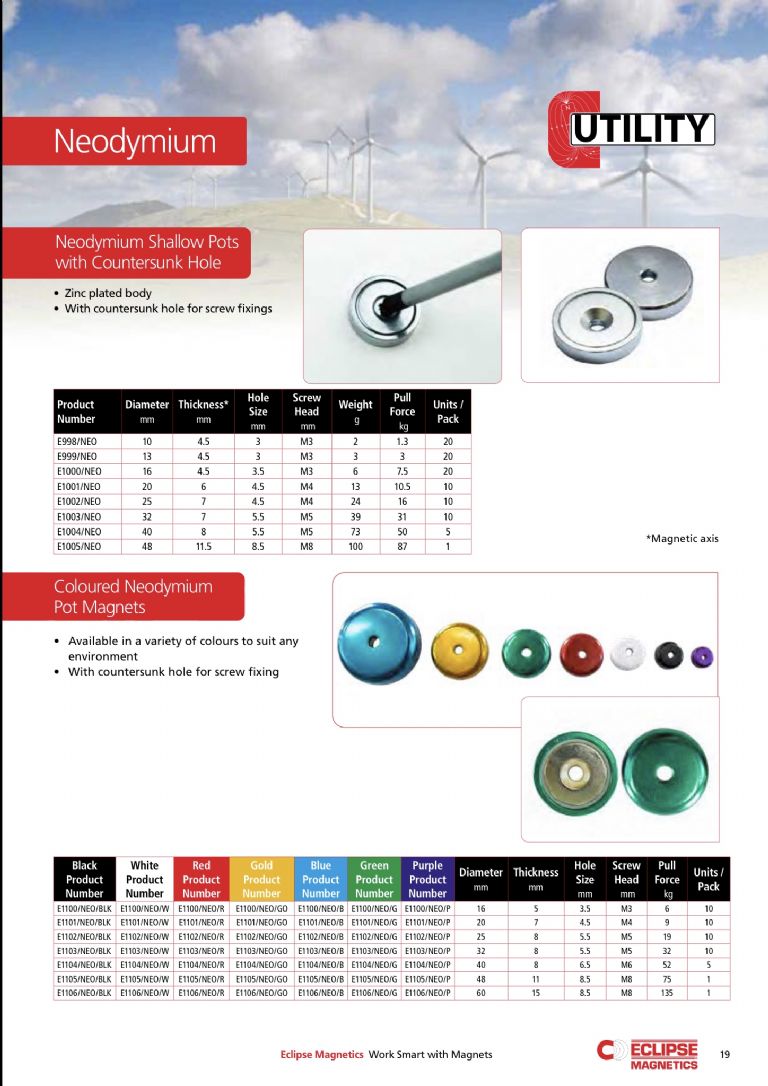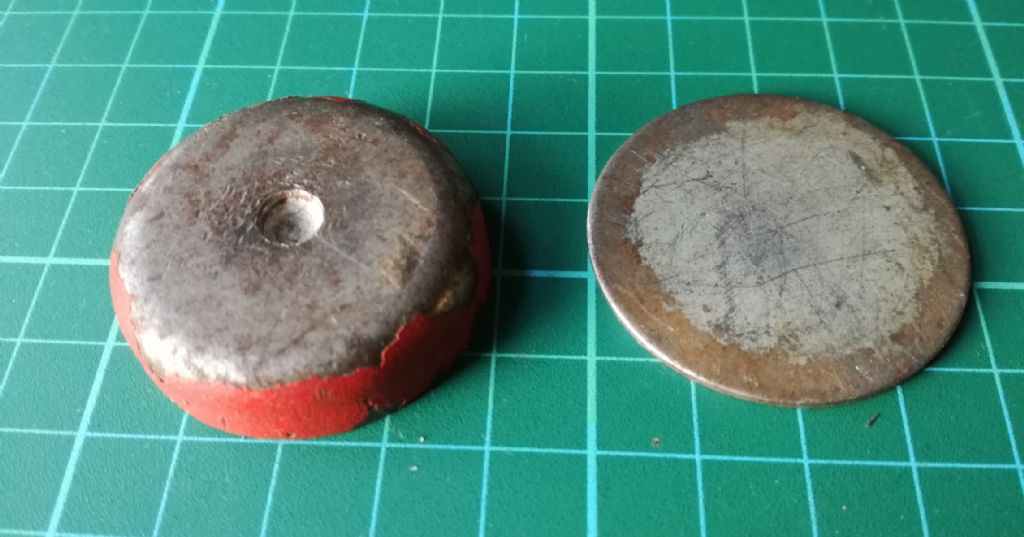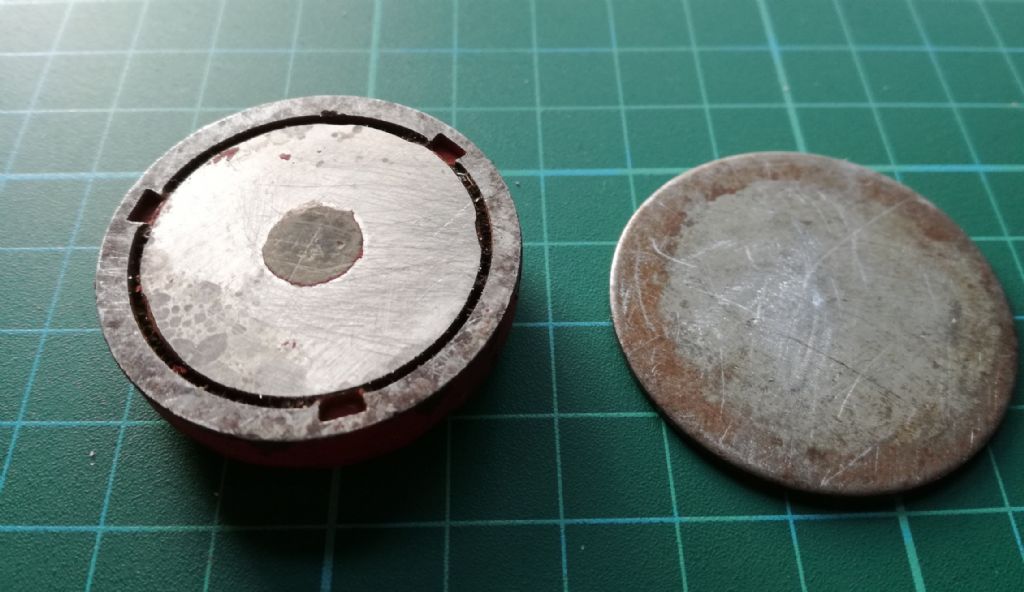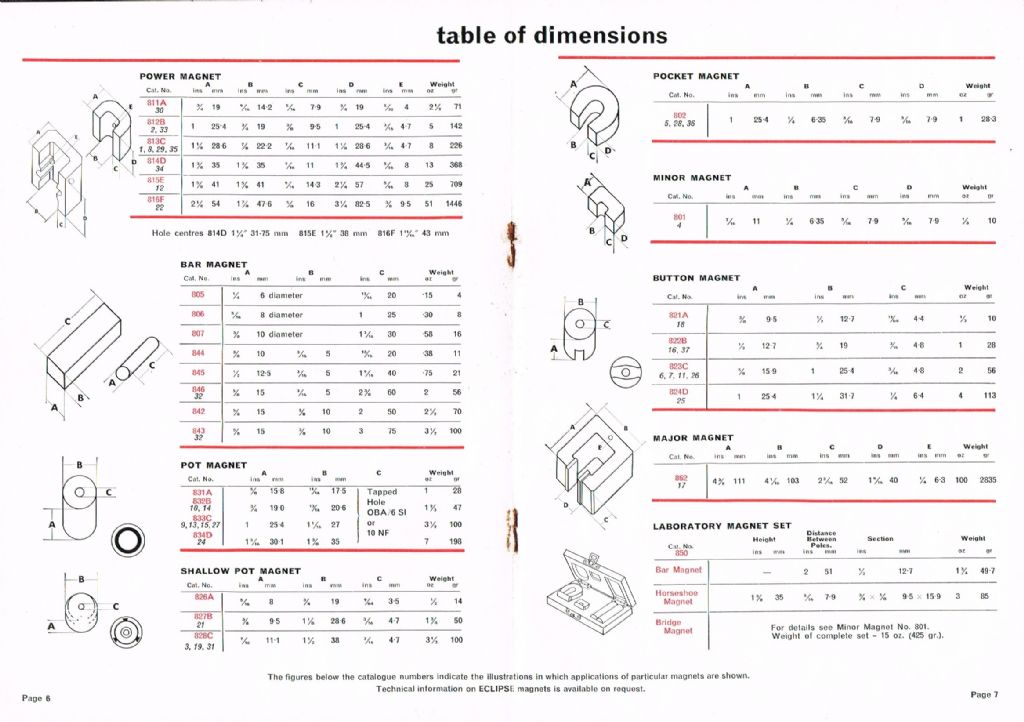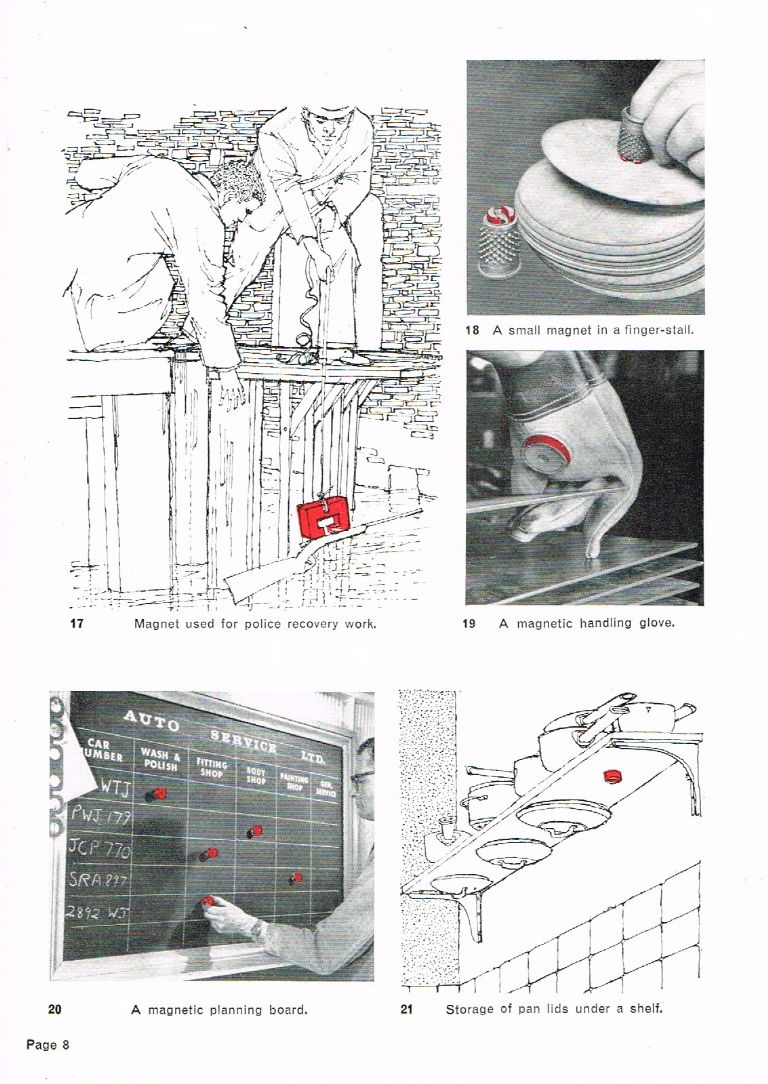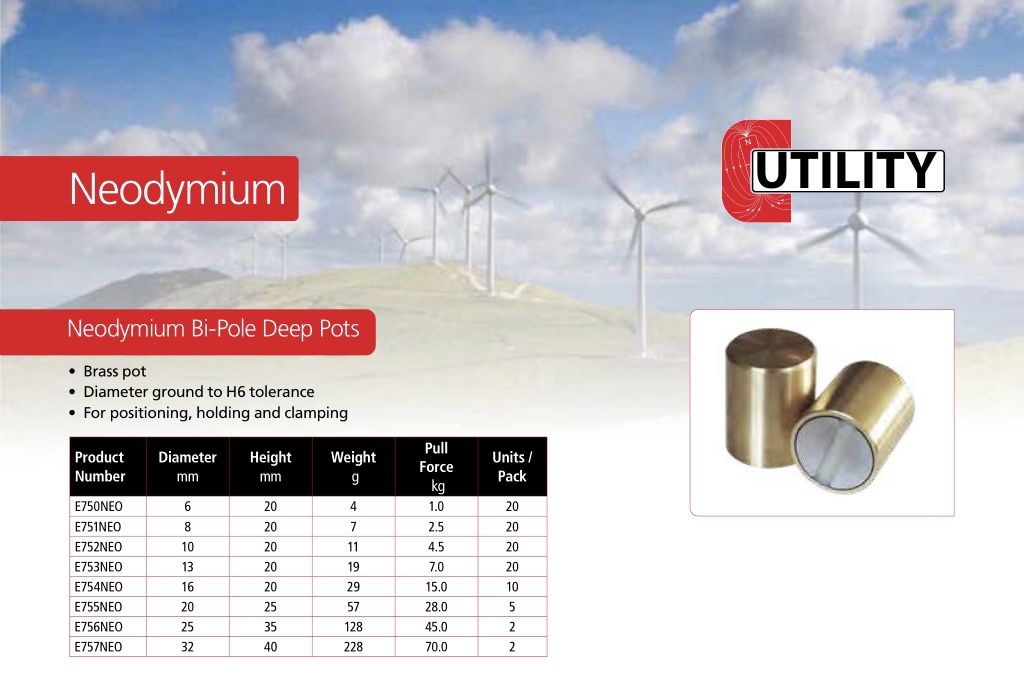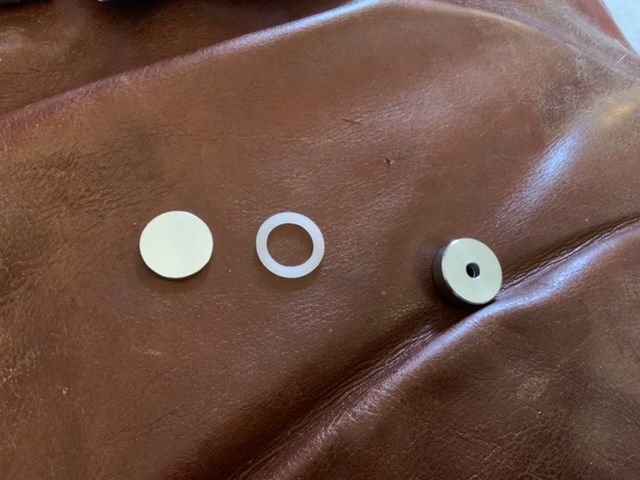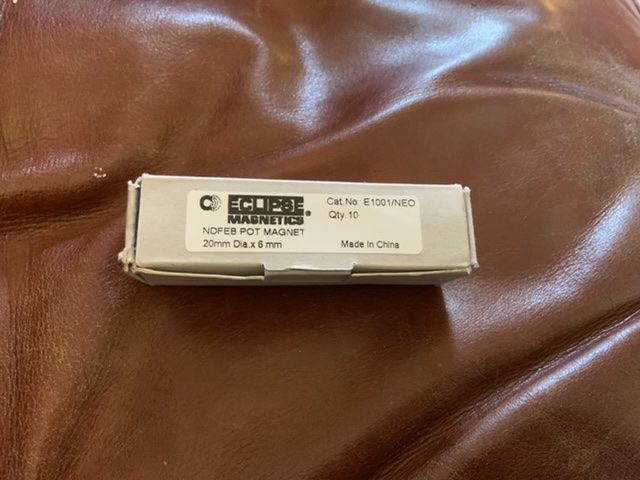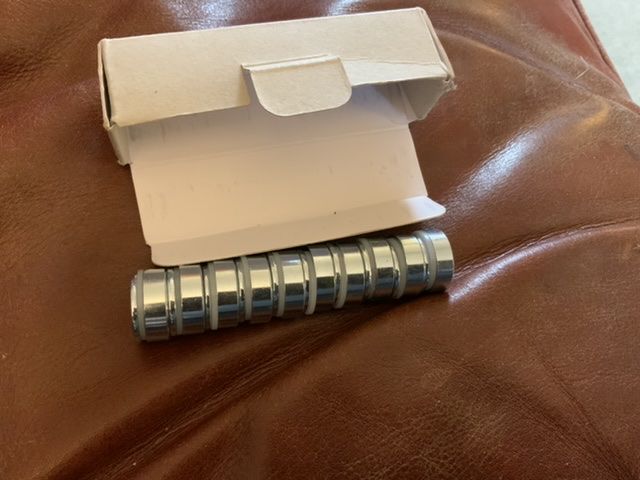Posted by Michael Gilligan on 20/12/2022 18:26:00:
Indeed, Martin … and I would take the distinction a little further; in that this [on p25] is what I would consider ‘potted’ in the sense of being embedded in resin:
.

.
The problem I have with Eclipse is that they don’t appear to explicitly tell us what they mean.
[ memories of Humpty Dumpty ]
MichaelG.
As I read this, the difference is that this type above is described as BiPole pot; note that it is a brass case which won't form part of the magnetic circuit.; it's a button magnet in a brass pot, rather than a disc magnet in a steel/iron pot.
Half of the front face will be North, with the other half South poles, just like a button or horseshoe magnet.
This means that in one position, two magnets will be strongly attracted to each other, whereas if you twist one by 180° along the axis, they will repel each other. You could maybe use them for holding a door closed, but force it open when the handle is rotated 180°, (as well as its conventional use against a steel plate etc.)
I suspect potted magnets with an iron/steel pot have south in the centre, with north concentrically in the outer of the pot.
i.e. they are conventional disk magnets with the pot to complete the circuit and bring both poles to the front, but concentrically.
It could of course be the opposite polarity, depending on the maker/purpose.
I've just been out for a quick play in the workshop.
My countersunk, non-potted magnets have the south pole on the countersunk side, as evidenced by deflection of a conventional magnetic compass; this is just like a disc magnet
A magnetic car aerial base is effectively a larger potted magnet, with an air rather than resin/brass gap, which in the case of the two I tried had South in the middle, and North concentrically around the outside in the steel casing.
It's not helped that many sellers on eBay etc describe their disc/flat magnets, featuring one pole each side/end, as "Button" magnets, which should really present both poles on one face. (as per Page 11)
Addendum
After another workshop trip, this time with a small cylindrical magnet and an ex computer hard drive magnet.
The cylindrical one is really just like a very thick disc magnet, north pole on one flat end, south on the other.
The HDD magnet, whilst thin and flat is quite different to a round disk magnet.
It's a thin kidney shape, but in this case one lobe of the kidney is north and the other south, so not aligned front to back, but end to end.
Mind your fingers if you're playing with these, they bite particularly if you have a pair.
I was holding a small cylindrical magnet against the kidney shaped HDD one looking for attraction/repulsion, but the steel pliers were quite strongly attracted to the bigger magnet.
That attraction was greater than the much smaller cylinder, such that when I released my grip on the pliers a bit, the little one shot out of the jaws, and across the full length of the garage; still not found it yet.
Bill
Edited By peak4 on 20/12/2022 20:54:54
 peak4.
peak4.

